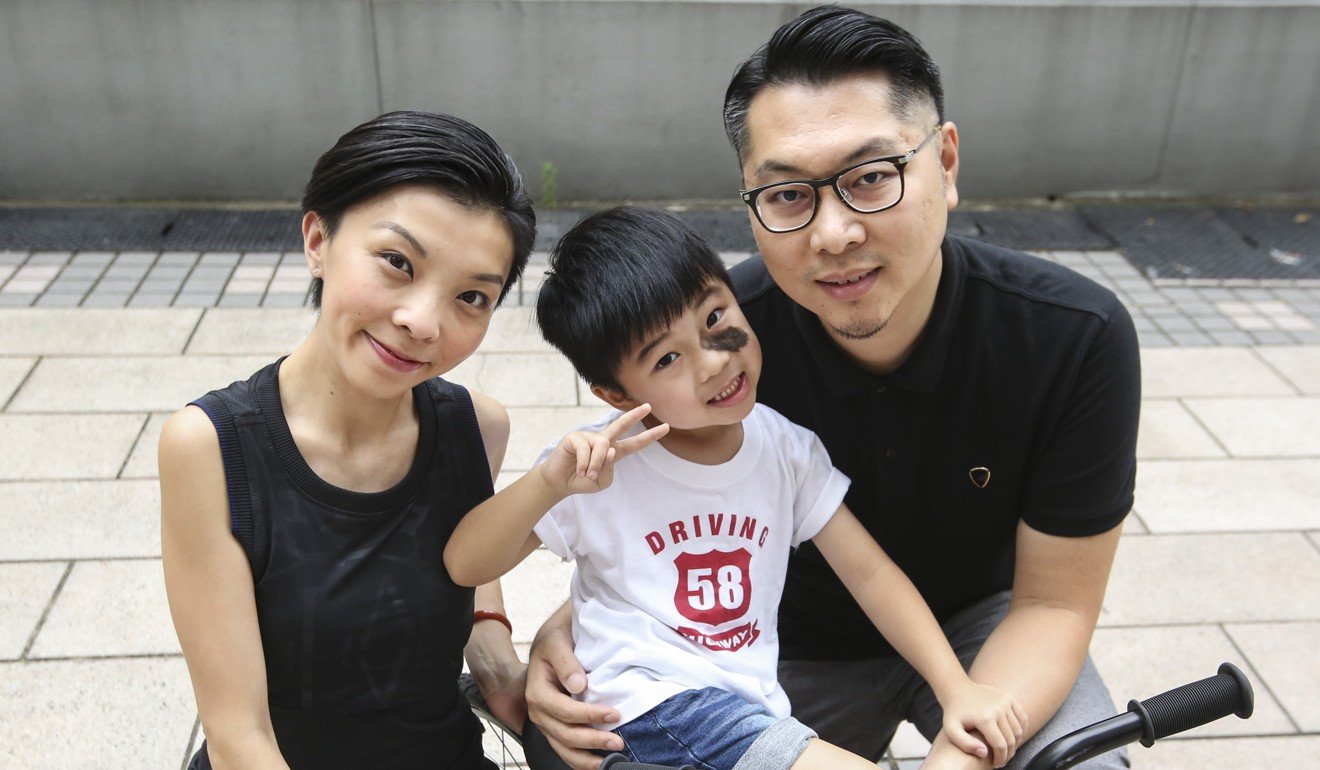
Hong Kong boy not allowing birthmark on his face to blemish his life
Little Fergus Lam may have been bullied over a facial feature, but he doesn’t let such treatment affect him and is an inspiration to his parents and others like him
He has been called “monster” and “ghost”, only because he has a birthmark on his face. But, at the age of five, Fergus Lam Seon-zi is no doubt a big boy when handling all this name-calling and bullying.
Birthmarks are coloured patches that are visible on the skin. They are often present at birth or develop soon afterwards, and some may need to be treated for medical reasons. But in Fergus’ case, his birthmark is harmless.
On a recent Wednesday, the kindergarten pupil was cycling and blowing bubbles cheerfully in a playground despite the rather unpleasant experience there when he was younger.
“No one in the world has a birthmark but you,” a boy once told Fergus, according to his mother, Neda Ng Hei-tung.
He did not react at the time, but Ng went up to the boy and explained to him that having a birthmark was normal, and her son was not alone.
It was just one of the many occasions when other children have made fun of Fergus and the black spot near his left eye. There was also a time when his father, Samuel Lam Tze-yeung, had to lecture another boy, who lives in the neighbourhood, who would poke his birthmark whenever they met each other. Thinking maybe it was best not to react, Fergus would just suffer in silence.
However it was inevitable for his parents to wonder when this kind of bullying would stop, and how bad their son’s life would be in a society where the idea of “perfect” is worshipped.
On one family occasion, a great uncle of Fergus used Photoshop to remove the birthmark from a photo, and the edited picture was framed by his grandmother.
“I believed they were just unaware of the situation and had no bad intentions. They needed the time to process this. It’s normal,” Ng said,
She added that the pair had become more understanding since learning more about such marks as well as how she felt.
Hoping to raise the self-esteem of their son and offer a better life when he was older, they took Fergus to three sessions of laser treatment to remove the mark not long after he was born.
Although this had been suggested by a doctor, they found themselves contradicting what they now teach him – to embrace the imperfection.
Ng said as soon as Fergus was born you could hear people at the hospital talking about the mark on his face.

Some six months later, they agreed to the suggestion and took Fergus to a private clinic for treatment. He was anaesthetised while a doctor tried to remove the mark.
“My heart ached when I saw him being anaesthetised,” Ng said. “I could also smell the burning from the laser.”
During the third and so far final treatment, Ng delivered her son, who was by then a toddler, to the operating theatre herself. “No,” he said and refused to let go of his mother’s arms. “He was holding me like a koala bear,” Ng remembered.
But she insisted he went and Fergus eventually underwent the treatment. Unlike the first time, he did not cry after but barely say a word. “He was looking at me in a very angry way,” Ng said.
By then the couple realised it was a sign telling them to stop.
“We had been teaching him that the birthmark was part of his body and a kiss from an angel. We had been telling him that he was special, and that’s what made him unique,” she said.
“But we, at the same time, tried to get rid of it. We were struggling, and it came to the point where we realised what we were teaching and doing were contradicting.”
Ng, who had a miscarriage before Fergus was born, understood that having a healthy child was luck itself, and no one should take things for granted.
She advises parents who have similar experiences to put themselves in their children’s shoes, rather than think what’s best for them without asking what they really want.
“We sometimes think we are doing the best for our children, but we often forget to put ourselves into their shoes,” she said. “I think we should not take everything for granted, but be grateful that our child is healthy and strong. Every child is unique. They have different personalities and appearances.
“I now don’t think the birthmark is a problem, unless Fergus thinks it’s a problem for him in the future. After all, we have to respect our child.”
Echoing the sentiments of his wife, Lam said: “Whether he has a birthmark or not, he’s my son. And I will always love him.”

